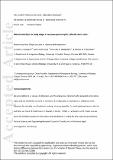Files in this item
Natural selection for body shape in resource polymorphic Icelandic Arctic charr
Item metadata
| dc.contributor.author | Franklin, Oliver D. | |
| dc.contributor.author | Skúlason, Skúli | |
| dc.contributor.author | Morrissey, Michael B. | |
| dc.contributor.author | Ferguson, Moira M. | |
| dc.date.accessioned | 2019-08-15T23:41:20Z | |
| dc.date.available | 2019-08-15T23:41:20Z | |
| dc.date.issued | 2018-08-16 | |
| dc.identifier | 254740235 | |
| dc.identifier | e41e2360-1fc2-4f30-a347-d0790ac33456 | |
| dc.identifier | 85052603574 | |
| dc.identifier | 000446835700006 | |
| dc.identifier.citation | Franklin , O D , Skúlason , S , Morrissey , M B & Ferguson , M M 2018 , ' Natural selection for body shape in resource polymorphic Icelandic Arctic charr ' , Journal of Evolutionary Biology , vol. Early View . https://doi.org/10.1111/jeb.13346 | en |
| dc.identifier.issn | 1010-061X | |
| dc.identifier.other | crossref: 10.1111/jeb.13346 | |
| dc.identifier.uri | https://hdl.handle.net/10023/18320 | |
| dc.description | Funding for this study was provided by Natural Sciences and Engineering Research Council of Canada and the Madame Vigdís Finnbogadóttir Scholarship. | en |
| dc.description.abstract | Resource polymorphisms exhibit remarkable intraspecific diversity and in many cases are expected to be maintained by diversifying selection. Phenotypic trade‐offs can constrain morphologically intermediate individuals from effectively exploiting both alternate resources, resulting in ecological barriers to gene flow. Determining if and how phenotypic trade‐offs cause fitness variation in the wild is challenging because of phenotypic and environmental correlations associated with alternative resource strategies. We investigated multiple pathways through which morphology could affect organismal performance, as measured by growth rate, and whether these effects generate diversifying selection in polymorphic Icelandic Arctic charr (Salvelinus alpinus) populations. We considered direct effects of morphology on growth and indirect effects via trophic resource use, estimated by stable isotopic signatures, and via parasitism associated with trophic resources. We sampled over 3 years in (lakes) Thingvallavatn and Vatnshlíðarvatn using the extended selection gradient path analytical approach and estimating size‐dependent mortality. We found evidence for diversifying selection only in Thingvallavatn: more streamlined and terminally mouthed planktivore charr experienced greater growth, with the opposite pattern in small benthic charr. However, this effect was mediated by parasitism and nontrophic pathways, rather than trophic performance as often expected. Detection of between‐morph differences in the presence (Vatnshlíðarvatn) and direction (Thingvallavatn) of size‐dependent mortality, together with nontrophic effects of shape, suggests that a morphological trophic performance explanation for polymorphism is insufficient. This rare insight into selection during early diversification suggests that a complex of interacting local factors must be considered to understand how phenotype influences fitness, despite morphological variation reflecting intuitive trade‐off explanations. | |
| dc.format.extent | 15 | |
| dc.format.extent | 1137680 | |
| dc.language.iso | eng | |
| dc.relation.ispartof | Journal of Evolutionary Biology | en |
| dc.subject | Adaptation | en |
| dc.subject | Intraspecific competition | en |
| dc.subject | Natural selection | en |
| dc.subject | Path analysis | en |
| dc.subject | Performance gradients | en |
| dc.subject | Phenotypic selection | en |
| dc.subject | Selection differential | en |
| dc.subject | Sympathetic diversification | en |
| dc.subject | QH301 Biology | en |
| dc.subject | SH Aquaculture. Fisheries. Angling | en |
| dc.subject | NDAS | en |
| dc.subject.lcc | QH301 | en |
| dc.subject.lcc | SH | en |
| dc.title | Natural selection for body shape in resource polymorphic Icelandic Arctic charr | en |
| dc.type | Journal article | en |
| dc.contributor.institution | University of St Andrews. School of Biology | en |
| dc.contributor.institution | University of St Andrews. Centre for Biological Diversity | en |
| dc.identifier.doi | 10.1111/jeb.13346 | |
| dc.description.status | Peer reviewed | en |
| dc.date.embargoedUntil | 2019-08-16 |
This item appears in the following Collection(s)
Items in the St Andrews Research Repository are protected by copyright, with all rights reserved, unless otherwise indicated.

